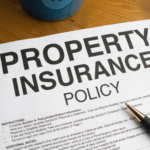
Commercial property damage of any kind can cause a large amount of undue stress for business owners. Regardless of whether only a small portion of the property seems to be compromised, all areas of the establishment should be thoroughly inspected to ensure the insurance claim filed is comprehensive and accurate. To do this effectively, commercial property owners should know how to calculate the value of a commercial property damage claim.
Calculating the Value of a Commercial Property Damage Claim
Calculating the value of a commercial property loss is similar to the process involved in determining a loss payment for a residential property. Although they have similar procedures, calculating a commercial loss often requires more time and steps to complete. When calculating the value of a claim, business owners will need to obtain a few pieces of key information regarding the damage, including:
- Whether or not the property is insured on a replacement cost or actual cash value basis
- The total amount of damage for both the property and its contents
- Any applicable policy limits for each type of insurance coverage
- The coinsurance percentage
- Any applicable deductibles
- The value of the covered property at the time of the loss
Determine if the Business has Replacement Cost or Actual Cash Value Coverage
Commercial properties can be insured for the replacement cost or the actual cash value of a property and its contents. However, these two approaches differ in how they calculate the value of property lost due to an unforeseen event.
Replacement cost policies, for instance, cover the costs associated with repairing or replacing a building with materials of the same or comparable quality. This coverage works to replace or repair damaged items in such a way as to restore them to their identical state, meaning that it will not include improvements required by building codes or laws that have been passed since the building was built. This coverage also does not include the value of the land the property is located on. Rather, the value is calculated based on the amount of money needed to hire contractors and purchase materials to repair or replace the property.
In theory, the replacement cost of a commercial property should be lower than its market value. Replacement costs must only account for building materials and labor to determine compensation, however, these costs can fluctuate, making it possible for the replacement cost of a property to be higher than its market value.
Replacement cost policies can offer insureds more financial protection should a loss occur because they do not take depreciation into account when determining compensation. However, this coverage is often more expensive and may not be the best option for every business.
On the other hand, actual cash value policies also cover the costs needed to replace or repair a property, however, the rate of compensation accounts for the depreciated value of the original property. A commercial property covered under an actual cash value policy will be replaced or repaired using modern construction techniques and materials. Actual cash value polices will typically have lower premiums than replacement cost policies, depending on the type of business.
Establish the Total Amount of Damage
When a commercial structure is damaged, the insurance carrier will supply the policyholder with a proof of loss form. This should provide the insurer with the specifics of the loss as well as a detailed breakdown of the amount of loss being claimed. Once the proof of loss form is filed with the carrier, the total damage amount can then be determined.
While the total amount of damage may exceed the policy limits, the limits must be included to calculate any coinsurance penalties that may apply because the final payout cannot exceed these limits. Commercial property owners mustn’t lower the total damage amount to match the policy limit, as they could eventually be penalized once any applicable deductibles are subtracted.
Make Note of Any Excluded Properties
Not all aspects of a commercial property are covered by a commercial property insurance policy. The Insurance Services Office specifically notes that money and securities, food stamps, animals, piers, docks, crops and grain, excavation costs, building foundations, and paved surfaces are commonly excluded. Electronic data, such as personal and business information stored on a hard drive, is also often excluded. This means the cost to restore valuable digital information is often not covered by a standard commercial property policy.
Despite these exclusions, various policy endorsements can add coverage for some of these items; however, the applicable endorsements must be in place before the loss. In the event an excluded item is included in the total damage amount reported on the proof of loss form, its value must be deducted from the insurable loss value in assessing the actual insurable damages.
Calculate for Coinsurance
Coinsurance is the act of splitting or spreading the amount of risk among multiple parties. With commercial insurance, this applies to both the property and contents coverage following a loss. Coinsurance ensures policyholders insure their property for an appropriate value and insurers receive fair premiums in exchange for the risk assumed. Most coinsurance clauses require policyholders to insure 80%, 90%, or 100% of a property’s actual value. For instance, if a building was assessed to have a $1,000,000 replacement value and has a coinsurance clause of 90%, it must be insured for no less than $900,000. The same building with an 80% coinsurance clause must be insured for no less than $800,000.
The formula for calculating coinsurance is fairly simple. Insureds should begin by dividing the actual amount of coverage on the property by the amount that should be carried (80%, 90%, or 100% of the property value). Then, multiply that amount by the amount of the loss to determine the amount of reimbursement. If this reimbursement value is greater than the specified limits of the policy, a secondary coinsurer can supply the remaining funds.
Determine the Deductible
The deductible is the amount that must be paid by the policyholder before an insurance provider will pay any expenses. Though a commercial property policy may have different deductibles for different covered losses, in most cases, only one deductible can apply to a single loss event. When a loss involves damage to more than one covered property and separate limits apply, the losses cannot be combined when determining the application of the deductible; rather, the deductible is applied once per occurrence.
For instance, if an insured has a commercial property policy with one limit for the building and another for its contents with a $1,000 deductible, the amount will only be deducted once for both types of damage as long as the damage is caused by the same loss event.
Determine the Amount of Eligible Loss
Once the deductible is subtracted from the amount of insured damage, the amount of eligible loss can then be calculated and compared against the policy limits. If the limits are greater than the amount of eligible loss, only the amount of loss should be paid. However, if the loss amount exceeds the policy limits, only the amount of coverage purchased can be obtained.
Because of this, policyholders need to remember to add in any applicable additional coverage beyond the limits of their commercial policy. These amounts can be paid out in addition to what is available under the base policy and can include debris removal, reasonable repairs, increased cost of construction, fire department service charges, and pollutant cleanup, among other items.
Knowing how to accurately calculate a property damage claim is incredibly important, but it is a complex process with many moving parts. Policyholders should consult with legal counsel to ensure they purchase and maintain proper and comprehensive insurance coverage for their property.
Commercial Property Insurance Claim Attorneys
Determining the value of a commercial property damage claim is a fairly straightforward process that allows policyholders to understand the true extent of the insurance coverage available under a commercial property policy. Unfortunately, insurance companies can still choose to undermine their policyholders by wrongfully denying coverage when it is most needed.
The commercial property insurance claim attorneys at Raizner Slania are well-versed in the claims process and have represented thousands of clients against major insurance providers in commercial property damage disputes. If you need assistance with a business insurance claim, we can help.


